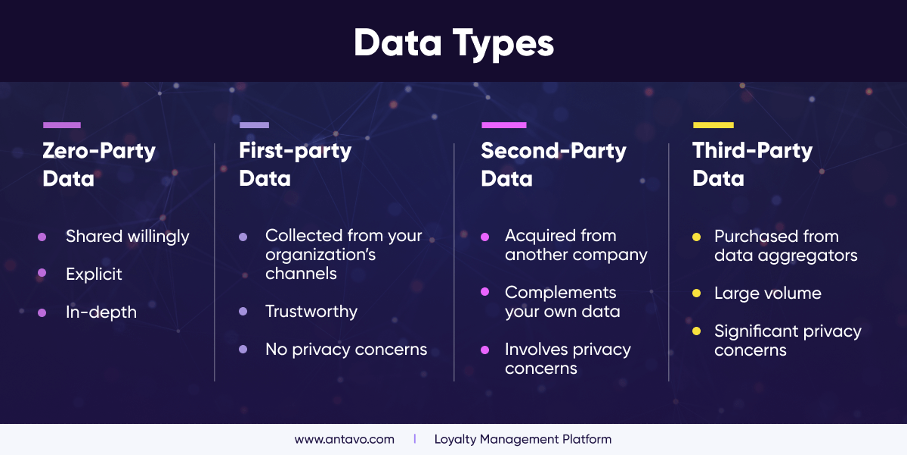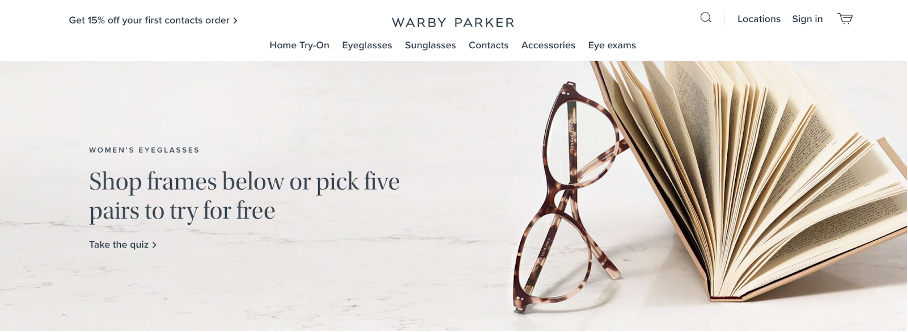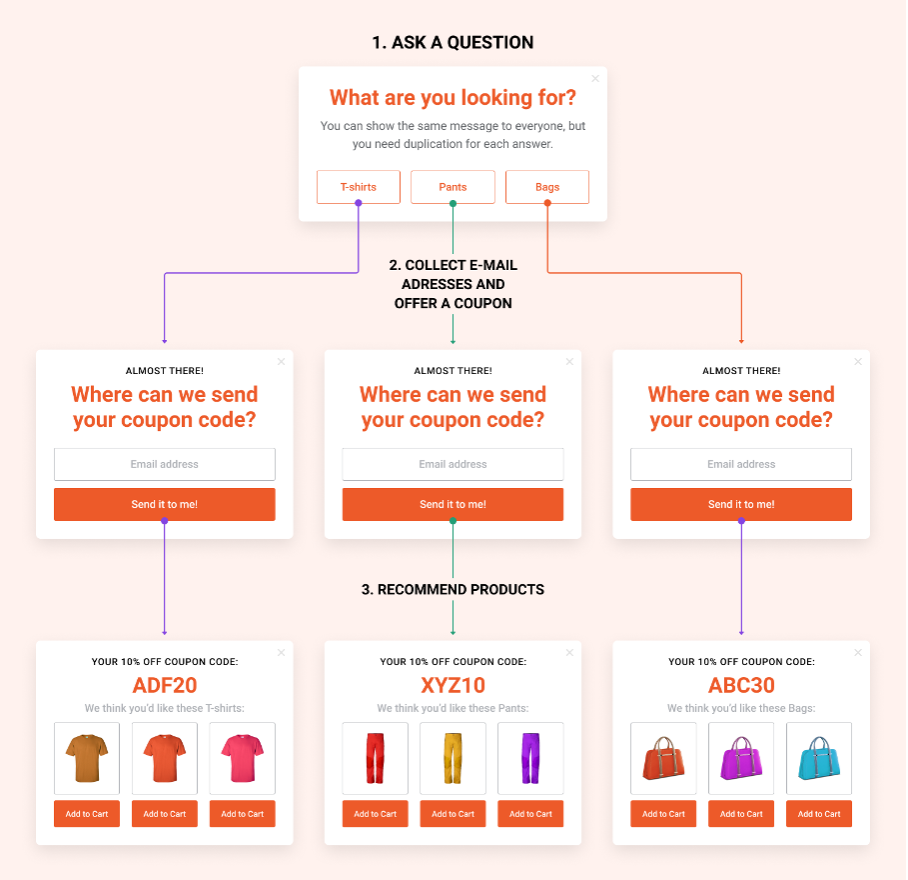It seems like more and more people are talking about zero-party data these days.
“Zero-party data is the new oil” – Forbes.com
“Zero-party data is the new secret weapon for brands” – Entrepreneur.com
But what is it? How is it different from first, second, or third-party data? And, most importantly, is “zero-party data” just the newest buzzword, or is it something you actually need?
Well, it’s emphatically not just a buzzword! Zero-party data is an increasingly important way of collecting the data you need to deliver a personalized experience to your customers.
It’s also an ethical method of data collection that occurs when a customer intentionally and proactively shares data about their interests and product preferences.
In this article, we’ll discuss what is zero-party data, why you need it, how to collect it, and more. It’s a lot to go over, so let’s jump right in!
What is zero-party data?
First, let’s define zero-party data!
Zero-party data is the information that users share with a brand willingly and intentionally to improve their customer experience or obtain some other kind of value. That means that zero-party data usually comes from questions that you ask your users directly.
A company directly collects zero-party data on its own channels which is then stored in a sustainable data center that operates 24/7. Whenever the company needs to learn more about customer preferences and purchase intentions it can easily access the data without relying on other parties.
For example, an ecommerce brand interested in acquiring zero-party data might run a quiz on their landing page or reach out via email campaigns to ask their customers for specific customer data.
As you’ll see in the rest of this article, zero-party data is a type of data that possesses unique benefits for your brand.
But before we get into that, let’s look at how it’s different from other data types.
How does zero-party data differ from first-party, second-party, and third-party data?
Understanding the nuances between zero-party data and other types of data—first-party, second-party, and third-party—is essential if you want to optimize your data strategies.
Here’s a breakdown of these data type differences.
1. Zero-party data
As already discussed, zero-party data refers to the information that consumers willingly and proactively provide to businesses.
It’s owned by your business. Zero-party data is actively and voluntarily shared by consumers through surveys, preference centers, feedback forms, and direct communication.
An example would be when customers intentionally provide explicit preferences, interests, or feedback through surveys or preference centers to personalize their experience.
2. First-party data
First-party data is information collected directly from interactions with your audience on your own platforms.
It’s owned and controlled by your business. First-party data is collected passively by observing consumer behavior on websites, apps, and other digital channels.
An example is when a customer makes a purchase on your ecommerce website. Their transaction history becomes first-party data.
3. Second-party data
Second-party data is essentially another company’s first-party data that you obtain through partnerships or agreements.
Although not collected directly by your business, you have access to it through a mutually beneficial relationship with another entity.
If you collaborate with other ecommerce brands and gain access to their customer data, such as their browsing preferences or purchase history, that data becomes second-party data for your business.
4. Third-party data
Third-party data is data collected and aggregated by external sources not directly engaged in the consumer interaction.
It’s not owned by your business. This type of data is collected from various sources (data brokers, vendors, or other external sources) and aggregated into datasets for sale or use by businesses.
Purchasing demographic data or behavioral targeting data from a data provider to enhance your marketing campaigns is a great example of third-party data.
For a quick summary, check out this great illustration from Antavo that sums up the different data types:

Now let’s use Netflix as an example to better understand these differences:
-
When you create a Netflix account and provide your name and fill out a survey about what kind of movies you like, you’re giving them a wealth of zero-party data.
-
While browsing Netflix, if you actively engage with their platform by indicating which shows or genres you’re interested in, you’re contributing first-party data. This type of data sharing is optional and aimed at enhancing your viewing experience.
-
Now, if Netflix were to obtain data from another streaming platform, say they entered into a partnership with Hulu and acquired information about your viewing habits there, they would be utilizing second-party data. This data exchange occurs between two entities, allowing Netflix to enrich its understanding of your preferences.
-
However, if Netflix were to purchase ratings data from a third-party source like IMDb, without your direct involvement or consent, that would fall under third-party data usage. This type of data isn’t collected firsthand by Netflix but is sourced from external providers for analytical or targeting purposes.
Why do you need zero-party data?
Zero-party data is becoming increasingly important because data tracking is getting harder and harder each year. This means that the death of third-party data is inevitable.
This is a result of privacy regulations like the EU’s General Data Protection Regulation (GDPR) and actions by private companies.
Apple started in 2021 with privacy changes, and Google has since announced that it won’t support third-party cookies. By 2023, marketers will be living in a cookie-less world. Utilizing a reliable proxy service can further safeguard data privacy and security, offering businesses peace of mind in their data collection efforts.
Zero-party data helps to make your customers feel valued while gaining the necessary information to personalize your messages.
By collecting zero-party data and understanding what your customers want and need from your business, you won’t have to make assumptions based on purchase history and customer behavior.
You’ll know exactly what your customers are looking for—because they’re telling you directly.
And the personalized experiences you can deliver based on zero-party data will help you to increase your customer base, improve the effectiveness of your digital marketing campaigns, and boost the number of repeat purchases your customers make.
How to collect zero-party data?
The most common way of collecting zero-party data is through on-site quizzes and surveys.
Potential customers can choose to answer a series of questions related to the products a brand sells.
Once they’ve answered all the questions, they’ll get their results, which tell them what category they’re in or which products might suit their needs.
A well-designed quiz will sort potential customers into different user segments, allowing you to deliver personalized content like product recommendations and send tailored messages through your email and SMS marketing channels.
Check out this example from Warby Parker:

By clicking on the “Take the quiz” link, a user will be directed to a series of questions about their face size and shape, helping them determine which frames are suitable for them.
They’ll also answer questions about style preferences, like color and frame shape.

At the end of the quiz, they’ll receive their personalized product recommendations:

The easiest way to create quizzes and collect zero-party data is by using a conversational popup, allowing your customers to fill out all the quiz questions in a multi-step popup without ever leaving your landing page.
Here’s how a conversational popup works, step by step:
- Ask as many questions as you’d like.
- Ask for visitors’ email addresses and offer a coupon code in exchange.
- Recommend products based on their previous answers.

You can start using conversational popups in no time with OptiMonk’s ready-to-use templates:
Quizzes can also be used on other channels, such as your welcome email series. This makes your marketing strategy more engaging and helps get your customers in the habit of reading your emails.
For example, Rituals ask new subscribers in the welcome email to complete their profile.
They ask questions like “What is your favorite time of the day?” or “Which Rituals products interest you the most?”
This helps them learn about a customer’s purchase intentions early in the customer journey, allowing them to send personalized offers in the future.

How to use zero-party data to personalize the customer experience and increase conversions?
By using zero-party data collection, you can create a more personal experience for your shoppers. What’s even better is that they won’t be creeped out by how you know about their preferences, since they’ll remember giving you the data themselves!
Let’s see how you can create a zero-party data strategy that makes maximum use of the customer data you collect.
1. Personalize on-site customer experiences
You can personalize your homepage, category pages, and other browsing pages based on the visitors’ preferences as revealed in zero-party data. For example, you can highlight one category for users interested in one type of product and others for those interested in other types.
You can also use popups to display personalized product recommendations.
Displaying only those products that fit your customers’ needs will shorten the amount of time they need to spend on your site before making a purchase and streamline the overall experience.
2. Personalize your digital marketing campaigns
You can also create different promotional email and SMS flows that target people based on their preferences.
One email campaign might highlight products that suit customers who are interested in activewear while another campaign targets those who want to buy exercise equipment.
3. Deliver personalized content suggestions
Just as you personalize your emails and SMS messages, you can also personalize the blog posts and ebooks you recommend to your customers.
Once again, you can use popups to promote personalized recommendations and ensure that people engage with them.
FAQ
What is an example of zero-party data?
An example of zero-party data is when a customer voluntarily provides information about their preferences, interests, or feedback directly to a business without any prompting. For instance, when a customer fills out a post-purchase survey, answers questions in a feedback form, or specifies their communication preferences in a preference center, they are providing zero-party data.
Why is it called zero-party data?
Zero-party data is called so because it represents a zero-sum game for businesses. Unlike first-party data, which is passively collected through observing customer behavior, or third-party data, which is purchased from external sources, zero-party data is willingly and proactively provided by the customers themselves. In other words, there is zero intermediary between the customer and the business when it comes to the collection of this data. The term “zero-party” emphasizes the direct relationship between the customer (first party) and the business, highlighting the transparency and voluntary nature of the data exchange.
Is zero-party data compliant with privacy regulations?
Yes, when collected ethically and transparently, capturing zero-party data can be fully compliant with privacy regulations such as the GDPR and the CCPA. Since consumers willingly provide this information and are aware of how it will be used, you can ensure compliance by obtaining explicit consent, providing clear opt-in and opt-out mechanisms, and safeguarding data through appropriate security measures.
How can businesses leverage zero-party data effectively?
To leverage zero-party data effectively, you should focus on building trust and fostering meaningful interactions with consumers. This involves using the data to personalize experiences, tailor marketing messages, and anticipate consumer needs and preferences. By demonstrating a genuine commitment to understanding and serving their audience, you can unlock the full potential of zero-party data to drive growth and innovation.
Recap
When customers intentionally and proactively share data about themselves, they are showing that they see value in a personalized experience on your site. They want to speed up their product discovery and move towards making the right purchase decisions more quickly.
And on your side, collecting zero-party data helps you learn more than you thought possible about your new customers.
As we all wean ourselves off third-party data and commit to respecting consumer privacy, being able to collect zero-party data and put it to use will become essential to the success of an ecommerce brand.
That’s why we’d urge you to choose an OptiMonk conversational popup template and get that zero-party data flowing in. You can check out this guide to creating quizzes if you’d like some more details and inspiration!









